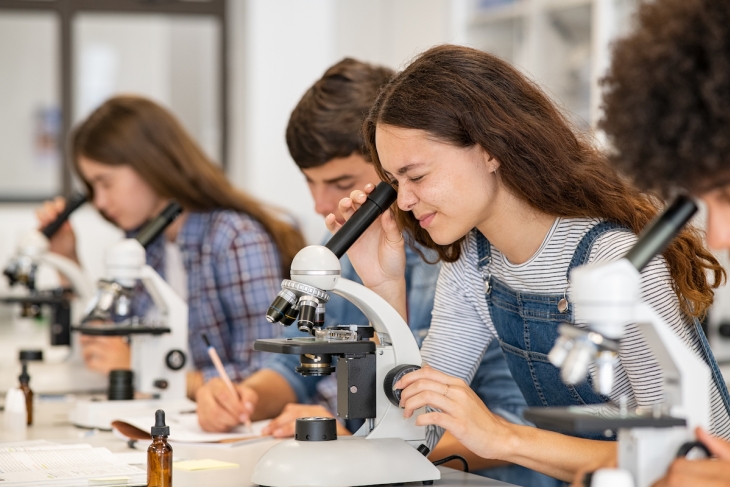In 2017, a team of researchers from Finland and Michigan State University who were eager to improve science instruction for secondary students launched a field trial for Crafting Engaging Science Environments (CESE), a project-based curriculum they created and aligned with the Next Generation Science Standards (NGSS). During the 2018–19 school year, the team conducted a controlled efficacy trial in a number of high schools across the United States. Its new report looks at the academic outcomes of the students who participated in that trial.
CESE is focused specifically on chemistry and physics and consists of six units (three for each discipline) ranging from the periodic table to conservation of matter to maglev technology. On average, teaching the full curriculum takes twelve to sixteen weeks. In each unit, students are required to construct models and connect them with evidence-based explanations of phenomena, incorporating on-the-job practices of scientists and engineers. Students are supported in learning about identifying system components and the relationships among them, and modeling can take many forms, including mathematical formulae, diagrams, and computer simulations. Each unit concludes with a comprehensive assessment, although the results of these were not incorporated into the research design. Two detailed curricular examples are provided in the report.
Before implementation, treatment group teachers spent three in-person days learning about the NGSS and project-based learning goals and walking through the first two units in chemistry and physics, acting as students while the CESE team taught them. Facilitators returned before the start of each of the remaining units for a briefer prep session. Team members were also available via video conference, phone, and email to help teachers daily throughout the project. Control group teachers met in person with the research team at the beginning of the school year for a one-day workshop on the NGSS but made no changes to their typical curricula.
The initial sample comprised a diverse group of seventy schools in Los Angeles Unified School District, San Diego County Office of Education, Detroit Public School Community District, and a handful of other districts across Michigan. However, attrition claimed nine buildings before the end of the treatment window. The reasons for this—fiscal problems, a teacher strike, medical emergencies, and “mismatch between the course timeline and student abilities”—are perhaps not relevant to the ultimate findings, but they do indicate that certain aspects of the school environment can stunt the best-intentioned innovations. The final analytic sample therefore included sixty-one schools (thirty treatment and thirty-one control), 119 teachers, and 4,238 students (2,127 treatment and 2,111 control).
All students in both groups were given a pretest drawn from NAEP’s question bank to get a baseline science achievement level and a summative assessment at the end of the intervention timeline. The exam consisted of items developed by the Michigan Department of Education for use on the state’s eleventh grade science assessment and was designed to encompass both grade-level NGSS standards and the three dimensions of science learning as articulated in the NGSS.
Results show that treatment students, on average, performed 0.20 standard deviations higher than control students on the summative assessment. There was minimal variation among students of different genders and racial and ethnic groups, an important indicator that the CESE curriculum was equally engaging to diverse students. Post-participation surveys showed an across-the-board increase in student interest in pursuing science education beyond high school, as well. The summative assessment, while also aligned to NGSS, is not specific to the CESE curriculum. Thus the positive outcomes seem to reflect the generalizability of CESE, but more research is needed to confirm this connection.
In the end, the researchers are buoyed by the outcome of this efficacy trial, which makes sense considering they created CESE! As scientists themselves in a number of disciplines, they feel that their push to get students and teachers to “do science” as a means of teaching both the method and the discipline is supported by the findings. The next step? Hopefully expansion of the curriculum.
SOURCE: Barbara Schneider, et. al., “Improving Science Achievement—Is It Possible? Evaluating the Efficacy of a High School Chemistry and Physics Project-Based Learning Intervention,” Educational Researcher (January 2022).




